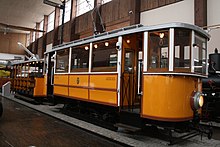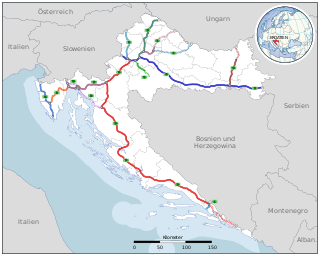
Transport in Croatia relies on several main modes, including transport by car, train, ship and plane. Road transport incorporates a comprehensive network of state, county and local routes augmented by a network of highways for long-distance travelling. Water transport can be divided into sea, based on the ports of Rijeka, Ploče, Split and Zadar, and river transport, based on Sava, Danube and, to a lesser extent, Drava. Croatia has 9 international airports and several airlines, of which the most notable are Croatia Airlines and Trade Air. Rail network is fairly developed but regarding inter-city transport, bus tends to be far more common than the rail.

Dubrovnik, historically known as Ragusa, is a city in southern Dalmatia, Croatia, by the Adriatic Sea. It is one of the most prominent tourist destinations in the Mediterranean, a seaport and the centre of the Dubrovnik-Neretva County. Its total population is 41,562. In 1979, the city of Dubrovnik was added to the UNESCO list of World Heritage Sites in recognition of its outstanding medieval architecture and fortified old town.

Wimbledon is an interchange station in the centre of Wimbledon in London for London Underground, London Trams and National Rail services, and is the only station in London that provides an interchange between the London Underground and Tramlink.
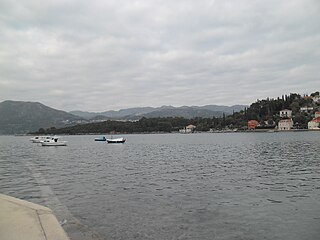
Koločep is one of the three inhabited Elaphiti Islands situated near the city of Dubrovnik with an area of 2.44 square kilometres. Koločep is the southernmost inhabited island in Croatia. According to the 2021 census, its population was 231. In the 2011 census, the population of the island was 163.
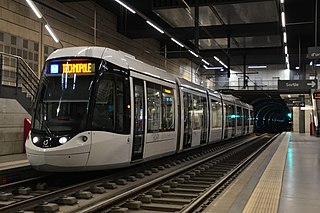
The Rouen tramway is a tramway / light rail network in the city of Rouen, Normandy, France. Construction began in 1991 and the network opened for service on 17 December 1994.

The Lviv tramway network is an electric tram in Lviv, Ukraine. It is one of two tram system in Western Ukraine, and the largest among narrow-gauge tram systems in Ukraine.

NK GOŠK-Dubrovnik 1919 is a professional football club based in the city of Dubrovnik, Croatia. Its name comes from the Gruž neighbourhood of the city.
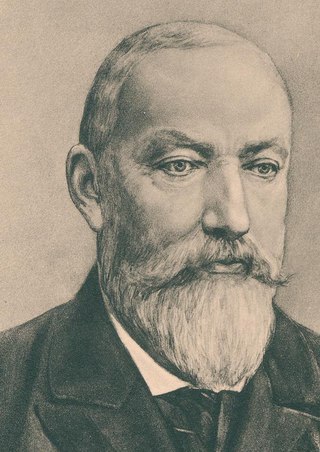
Baron Francesco Ghetaldi-Gondola or Frano Getaldić-Gundulić, was a Ragusan writer and politician, the first son of Sigismondo Ghetaldi-Gondola and Malvina Ursula de Bosdari. Francesco was a member of the Knights of St. John from 1889 until the death of the Mayor of Dubrovnik. He was decorated with the Cross of Devotion (S.M.O) on June 15, 1857. He fought in the Franco-Prussian War (1870–1871). Francesco founded the Philatelic Society in Dubrovnik on December 4, 1890.

The Trieste–Opicina tramway is an unusual hybrid tramway and funicular railway in the city of Trieste, Italy. It links Piazza Oberdan, on the northern edge of the city centre, with the village of Villa Opicina in the hills above.

Liepājas tramvajs is a municipal company that operates a single tram line in Liepāja, Latvia. The current double-tracked tram line has a length of 7.9 kilometres (4.9 mi).

Bergen Tramway was a tram in Bergen, Norway. It was in operation from 1897 to 1965. The first three lines were opened on 29 June 1897. Starting in 1950, tramway lines were gradually replaced with bus and trolleybus routes. The last line closed in 1965. Since 1993, a heritage tram is operated in Møhlenpris by the Bergen's Electric Tramway association. A light rail system was proposed in 1995, adopted in the 2000s and started operating in 2010.
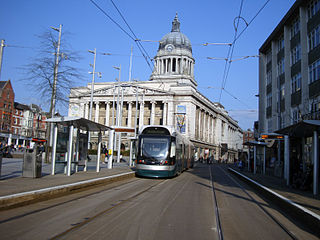
Nottingham is the seventh largest conurbation in the United Kingdom; despite this, the city's transport system was deemed to be poor for its size in the 1980s. In the early twenty-first century, the UK government invested heavily in the transport network of Nottingham, which has led to the re-opening of the Robin Hood Line and the construction of a light rail system, Nottingham Express Transit.
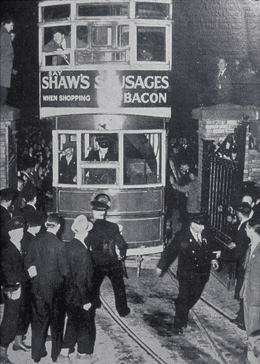
Dublin tramways was a system of trams in Dublin, Ireland, which commenced line-laying in 1871, and began service in 1872, following trials in the mid-1860s. Established by a number of companies, the majority of the system was eventually operated by forms of the Dublin United Tramways Company (DUTC), dominated for many years by William Martin Murphy. Most of the services ran within the city centre and near suburbs, with the majority of major suburbs served. Additionally, there were two longer-range services, one reaching the "excursion" destination of Poulaphouca Falls, and two services concerning Howth.

Gruž is a neighborhood in Dubrovnik, Croatia, about 2 km northwest of the Old City. It has a population of approximately 15,000 people. The main port for Dubrovnik is in Gruž as well as its largest market and the main bus station "Libertas". While historically a manufacturing and industrial base for Dubrovnik, today it is one of the city's main residential areas along with Lapad and Mokošica.

Transport in Zagreb, the capital of Croatia, relies on a combination of city-managed mass transit and individual transportation. Mass transit is composed of 19 inner-city tram lines and 120 bus routes, both managed entirely by Zagrebački električni tramvaj. Croatian Railways manages the parallel Zagreb Commuter Rail system. The city is served by the Franjo Tuđman Airport, which carries more than 3,300,000 passengers per year.
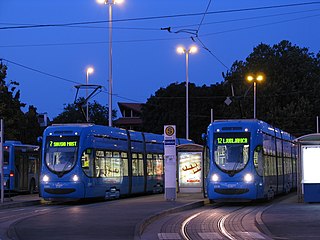
The Zagreb tram network, run by the Zagrebački električni tramvaj (ZET), consists of 15 day and 4 night lines in Zagreb, Croatia. Trams operate on 116.3 kilometres (72.3 mi) of metre gauge route. During the day every line runs on average every 5–10 minutes, but almost every station serves at least two routes. Nighttime lines have exact timetables averaging at about every 40 minutes. The first horsecar tram line was opened in 1891, and the first electric tram ran in 1910. Zagreb's tram system transported 204 million passengers in 2008.

The tram system in Ljubljana, the capital of Slovenia, was originally built in 1901 and was operated until 1958. Slovenia was then part of Austria-Hungary and Yugoslavia, respectively. Work started in 1900 and the tram was put in use after postponements and without a special ceremony on 6 September 1901. The tram system's end came on 20 December 1958, when it was replaced in a ceremony by 12 buses.
There are currently no operational narrow-gauge railway lines in Croatia. In some cities there are still metre-gauge tram networks.

Sarajevo main railway station is a railway station in Sarajevo, the capital of Bosnia and Herzegovina, located in the northwest part of the city, approximately 3 kilometers from the downtown area near Marijin Dvor.
